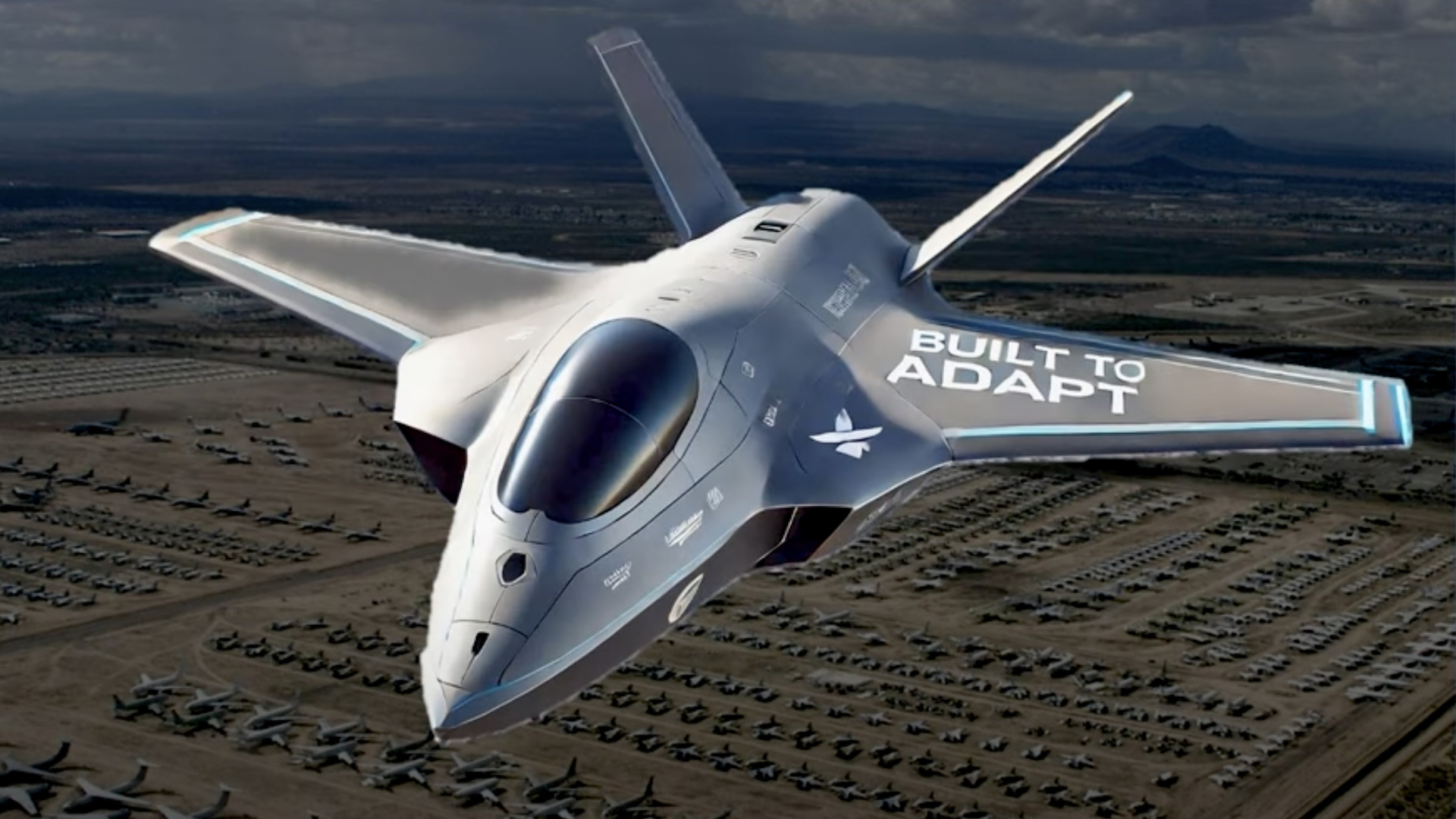A notional light fighter concept has been presented by the U.S. Air Force’s senior uniformed officer, providing a thought-provoking insight into one direction that the service’s future combat fleet could take. The concept emerges as Air Force officials are increasingly questioning the requirements for the crewed sixth-generation stealth combat jet being developed as part of its Next Generation Air Dominance (NGAD) initiative.
An illustration of the light fighter concept was included as part of a presentation by Chief of Staff of the Air Force, Gen. David W. Allvin, at the Global Air and Space Chiefs Conference, held in London last month and attended by air and space chiefs from around the world. The presence of the illustration was first brought to our attention by The Aviationist.
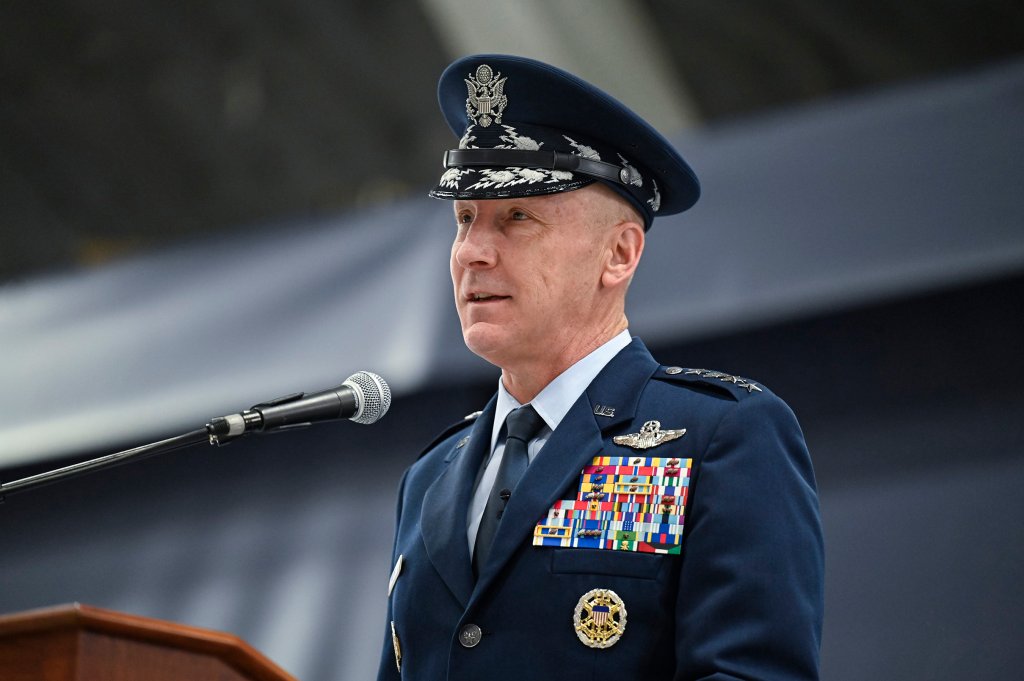
While it must be stressed that the illustrated concept is intended to be notional, it does at least provide clues about how the Air Force would imagine a future light fighter. Looking something like a scaled-down F-35 stealth fighter, the single-engined aircraft is clearly tailored for low observability, with a prominent chine line around the fuselage. The wings are notably similar to those on the F-35, with which it also shares outward canted twin tailfins, although there are no horizontal stabilizers. The relative size of the bubble canopy helps determine the size of the notional light fighter, which is somewhat smaller — although not dramatically smaller — than the Joint Strike Fighter.
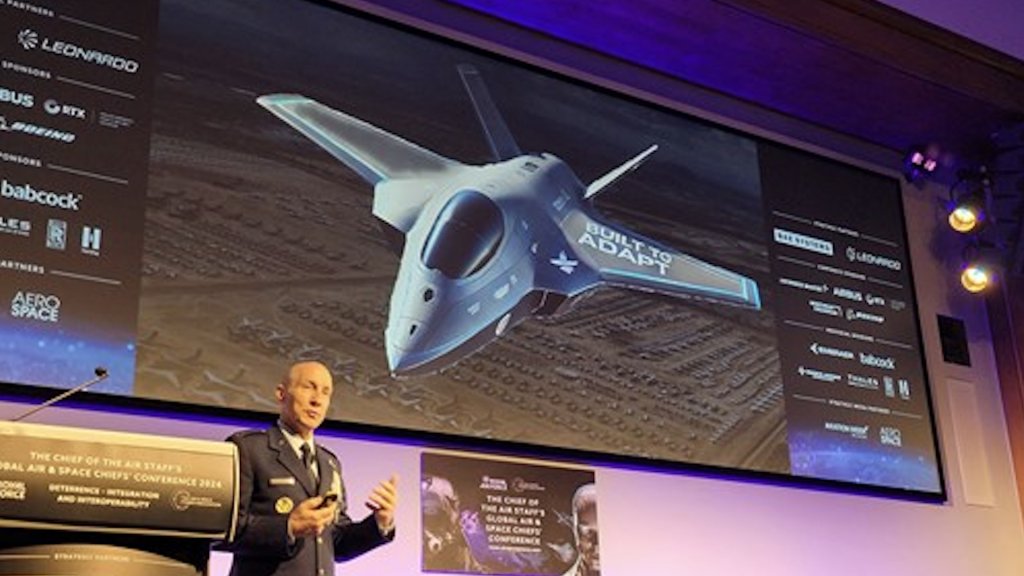
During his address in London — organized by the Air and Space Power Association — Allvin provided a vision of future air forces in which a premium is placed on “building to adapt,” as opposed to “building to last.” This would be achieved, Allvin argued, by focusing on developing new iterations of common software that could be used on multiple platforms. The pace of software development would mean that the relative importance of the corresponding hardware — described by Allvin as a potential “albatross” — would be greatly reduced.

This kind of software-led vision is something that we have heard in the past — examples include the ‘Digital Century Series’ approach espoused by Will Roper, the former Assistant Secretary of the Air Force for Acquisition, Technology, and Logistics. Under Allvin’s vision, crewed fighters would be more “disposable,” with the cutting edge focused on new software, while hardware could be discarded much more rapidly than is the case today, with the Air Force’s aging fleets.
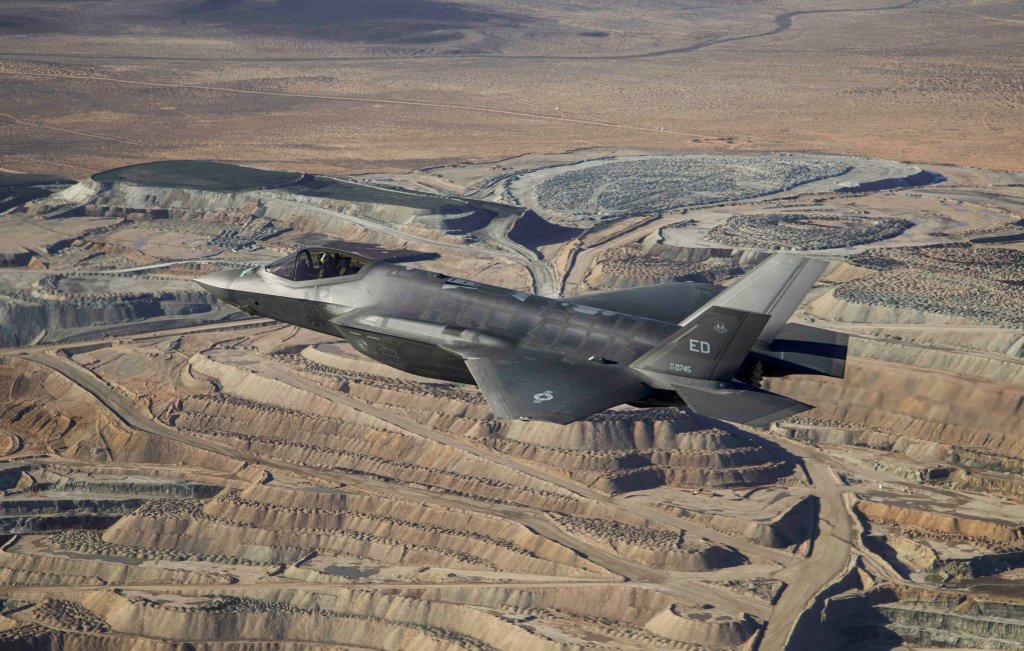
“The capability to update at the speed of software, this is the edge we can deliver over our adversaries,” Allvin said, noting that, as well as being systems-centric rather than platform-centric, future air forces would also rely heavily on “swarming” to meet operational requirements.
Perhaps the most interesting aspect of the notional light fighter concept, however, is the timing of its appearance.
As we have explored recently, the Air Force’s requirements for a new crewed fighter that will form the centerpiece of the NGAD effort are increasingly coming under scrutiny.
In particular, there has been concern about how to mitigate the price tag on this aircraft, which is expected to be almost $250 million per copy. Among the options are sacrificing certain capabilities on that aircraft, or leaning increasingly upon uncrewed assets, including the service’s planned fleets of Collaborative Combat Aircraft (CCA) drones.
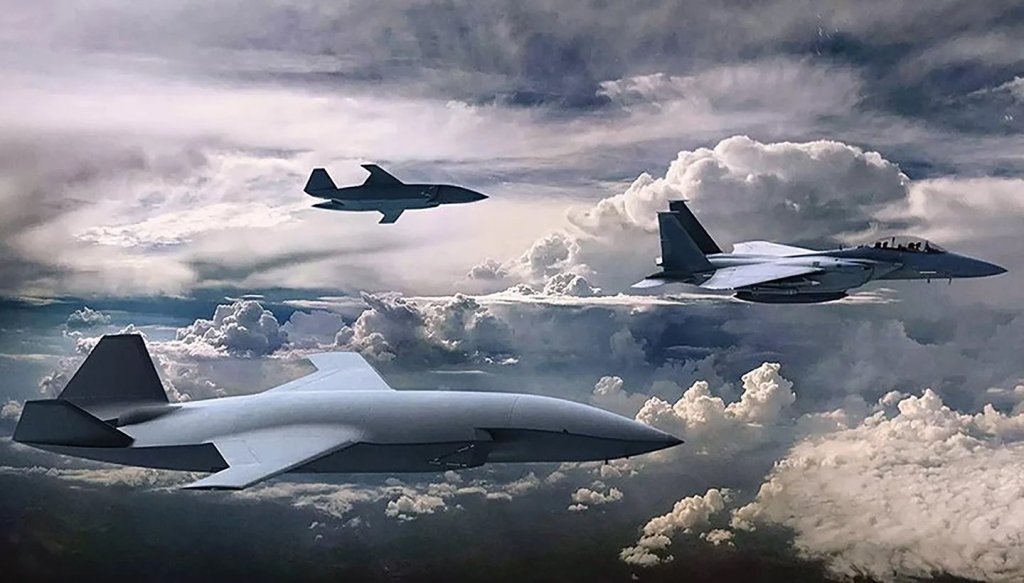
After much speculation about the future of the new sixth-generation fighter, not to mention other elements of the larger NGAD initiative, Secretary of the Air Force Frank Kendall last month confirmed the Air Force was reviewing the NGAD combat jet and just what it will deliver in terms of capabilities and at what cost.
“It’s a very expensive platform,” Kendall told Defense News, according to a story published on July 1. “It’s three times, roughly, the cost of an F-35, and we can only afford it in small numbers.”
Based on figures from last Fall, published by the F-35 Joint Program Office, the average unit price across all variants, including the aircraft’s F135 engines, in the latest production lots, was around $82.5 million.
Late last month, Kendall confirmed that while still committed to NGAD, the Air Force is “taking a pause” on the program, noting also that while the sixth-generation fighter component will have a human pilot to start with, an optionally crewed version might ultimately be developed too.
While Air Force officials have stressed that the NGAD — including its crewed combat jet component — is still a top-priority program, it’s clear that they are also open to reconfiguring it, at least to some extent, while presumably also eyeing what might come next.
Bearing in mind the NGAD has always been billed as a ‘family of systems’ concept, adding some kind of lower-cost crewed aircraft at a later date — some sort of light fighter adjunct — would not be out of line with the effort’s broader ambitions.
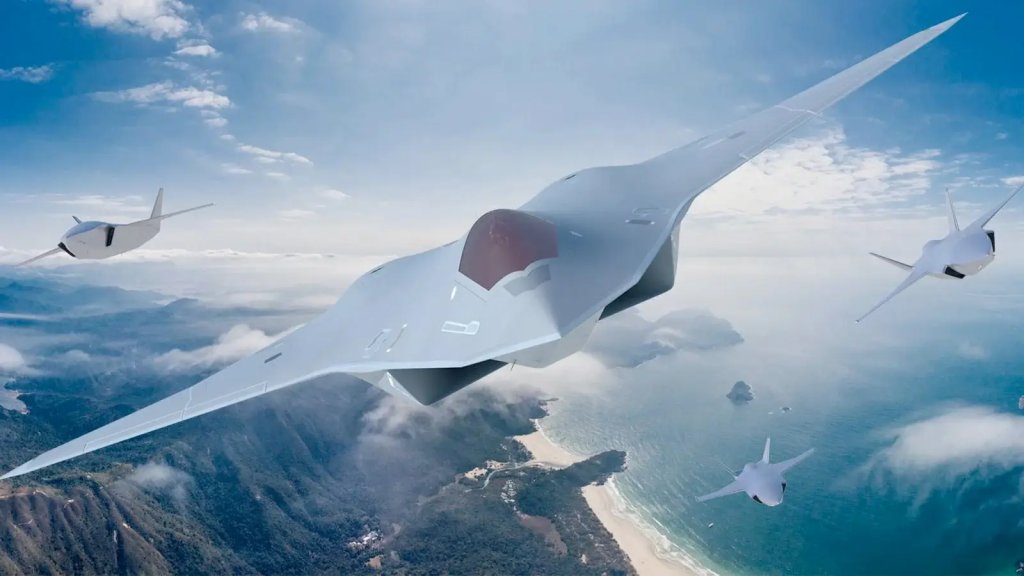
Were Allvin’s vision to be followed through, then the Air Force’s sixth-generation stealth jet could eventually be accompanied by multiple iterations of light (or at least lighter) fighters, offering a way to provide the kind of combat mass needed for a future conflict with China, for example. At the same time, not remaining wed to a single platform would offer a route to ensuring that software developments were the key driver in moving capabilities forward to keep pace with China’s own rapid air power modernization.
Interestingly, there have also been previous signs that some kind of ‘high/low’ fighter mix could be on the cards for the Air Force of the future, as you can read about here.
Back in 2021, retired Gen. James M. Holmes, the former head of Air Combat Command, reportedly brought up the idea that the Air Force might consider fielding two distinct versions of the NGAD fighter component, one optimized for long-range/heavy-payload missions of the kind that would likely be required in the Indo-Pacific region, as well as one with shorter range sufficient for the European theater of operations.
Presumably, the two designs would share a high degree of commonality, with a focus on modularity and identical aircraft subsystems, reducing risk and increasing commonality. Meanwhile, the long-range requirements of a fighter to operate in the Pacific theater would appear to be a potential problem for any future light fighter, although the development of stealthy tankers could help address those shortcomings.
On the other hand, there have also been suggestions that the Air Force should consider procuring an entirely different future fighter.
Earlier in 2021, the previous Air Force Chief of Staff Gen. Charles Q. Brown Jr. announced the launch of a months-long study into the service’s future force mix, including the possibility it could include a “clean-sheet design.” Described as a “four-and-a-half-gen or fifth-gen-minus” aircraft, such a fighter would be cheap enough to be procured in the numbers required to eventually replace the F-16.
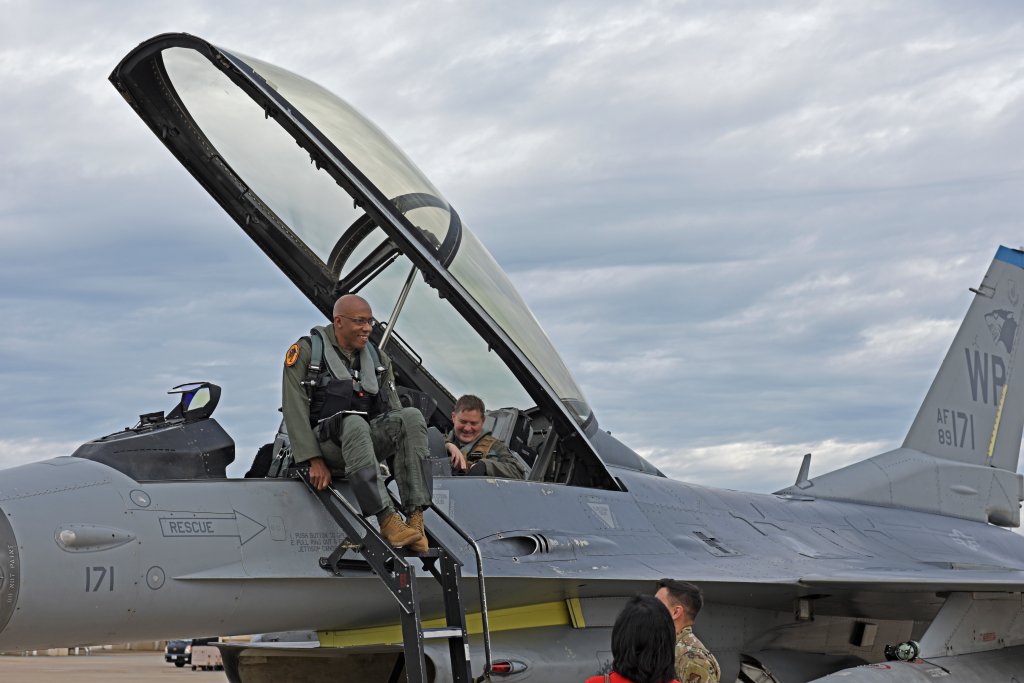
The idea mooted by Brown was distinct from simply buying more F-16s, such as the latest Block 70/72 version, something that Will Roper had suggested could happen, in an interview with Aviation Week around the same time.
Especially interesting is the fact that Brown had stressed that a new fighter of this kind would have to be based around open-mission systems, allowing it to receive software updates in rapid succession, potentially even during a mission. That kind of thinking also underpins the idea of a future fighter as outlined by Allvin last month.
In his vision, Brown described “something new and different, that’s not the F-16 — that has some of those capabilities but gets there faster and uses some of our digital approach.”
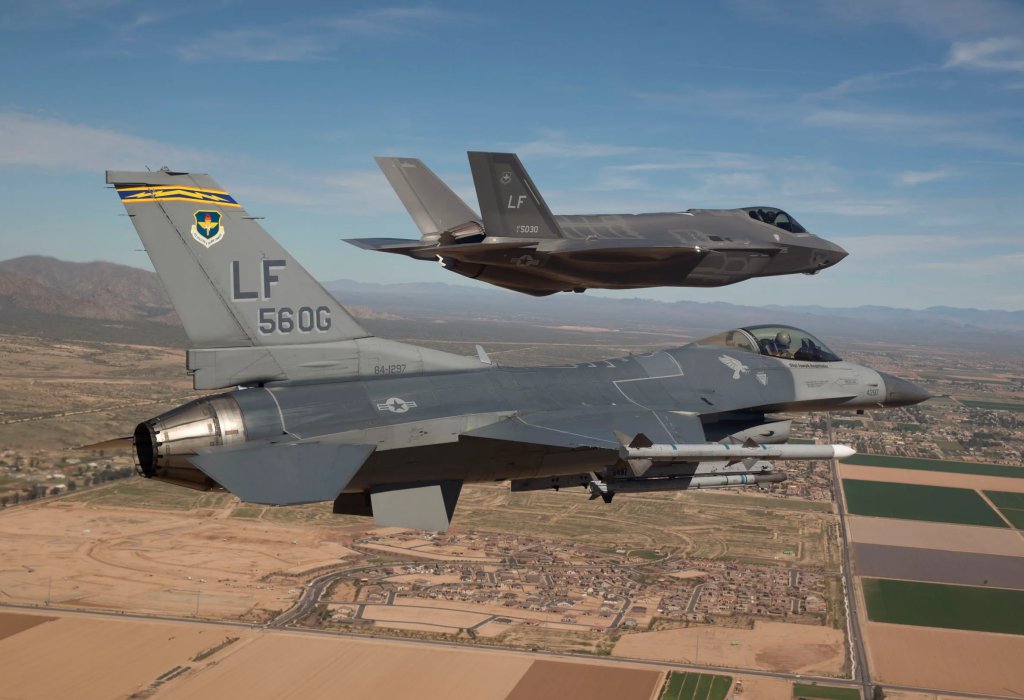
What’s common to these ideas is harnessing the potential of digital engineering and advanced manufacturing techniques to rapidly produce aircraft — potentially in relatively small production runs — that can then accommodate fast-evolving software ‘refreshes.’ These will be able to accommodate evolving designs, as well as give the ability to integrate new weapons and sensors faster. The end result should not only be more affordable (a big question in itself) but also better keep pace with dynamically evolving threats, especially those from China.
Aside from peer conflicts, there have also been concerns raised that the Air Force, especially with NGAD, is moving too far away from the kind of low-end fight that characterized the last couple of decades of U.S. military operations.
There’s an argument, perhaps, for a multirole light fighter that can not only boost combat mass overall but fill for lower-end missions. These would include not only the type of asymmetric combat that the Air Force has been involved in for years in Afghanistan and the Middle East, but also homeland defense and other air-policing-type missions, which don’t require a very expensive high-end fighter.
Such concerns were addressed under the Air Force’s Tactical Aircraft (TacAir) study, launched in 2021 “to look at what is the right force mix,” in Brown’s words. Speaking then, the previous Air Force Chief of Staff stressed that the service needs fifth- and sixth-generation fighters (the F-35 and NGAD) “to remain competitive against our adversaries” but that it also needs capabilities for the “low-end fight.”
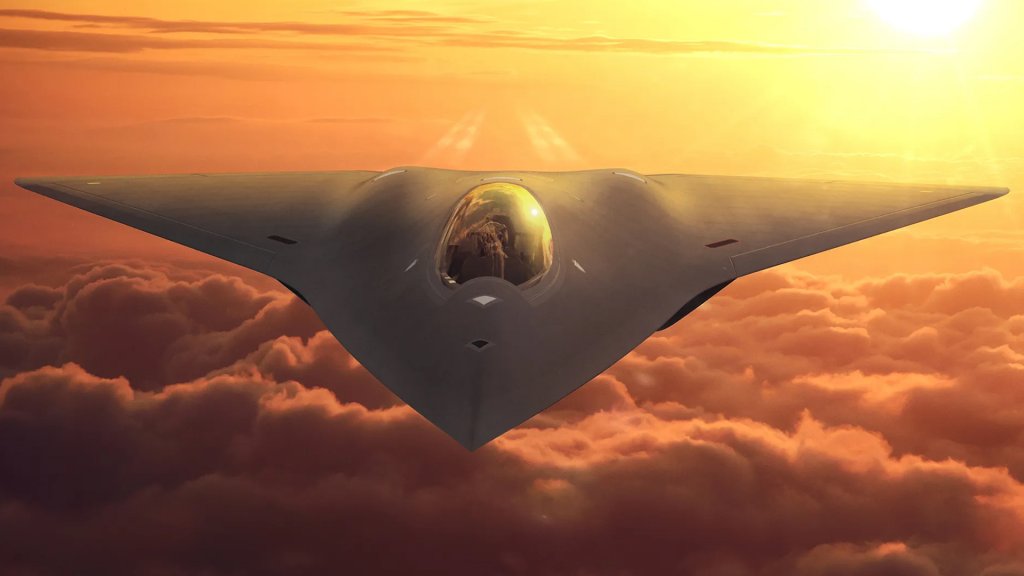
Lockheed Martin
Against this backdrop, there are also developments in uncrewed technologies and concepts of operations that are changing even more quickly than in the crewed fighter field. For a long time now, the Air Force has been looking at increasingly integrating combat drones within its tactical aviation fleet. With plans for the CCA still taking shape, drones could eventually have an even more dramatic effect on the future of the Air Force and, in turn, could influence plans for future crewed fighters, especially in terms of the optimum force mix.
There have also been previous suggestions that the sixth-generation crewed fighter at the center of the NGAD program might not necessarily be best tailored to work with the CCA. While there have been assumptions that CCA has been developed to optimize it for NGAD, Secretary Kendall recently observed that “the CCA concept came along after the service had begun working to develop NGAD.” This suggests that the NGAD requirements may have been largely frozen before the emergence of the CCA program and that a different crewed platform might be better suited to exploiting the synergies offered by these drones.
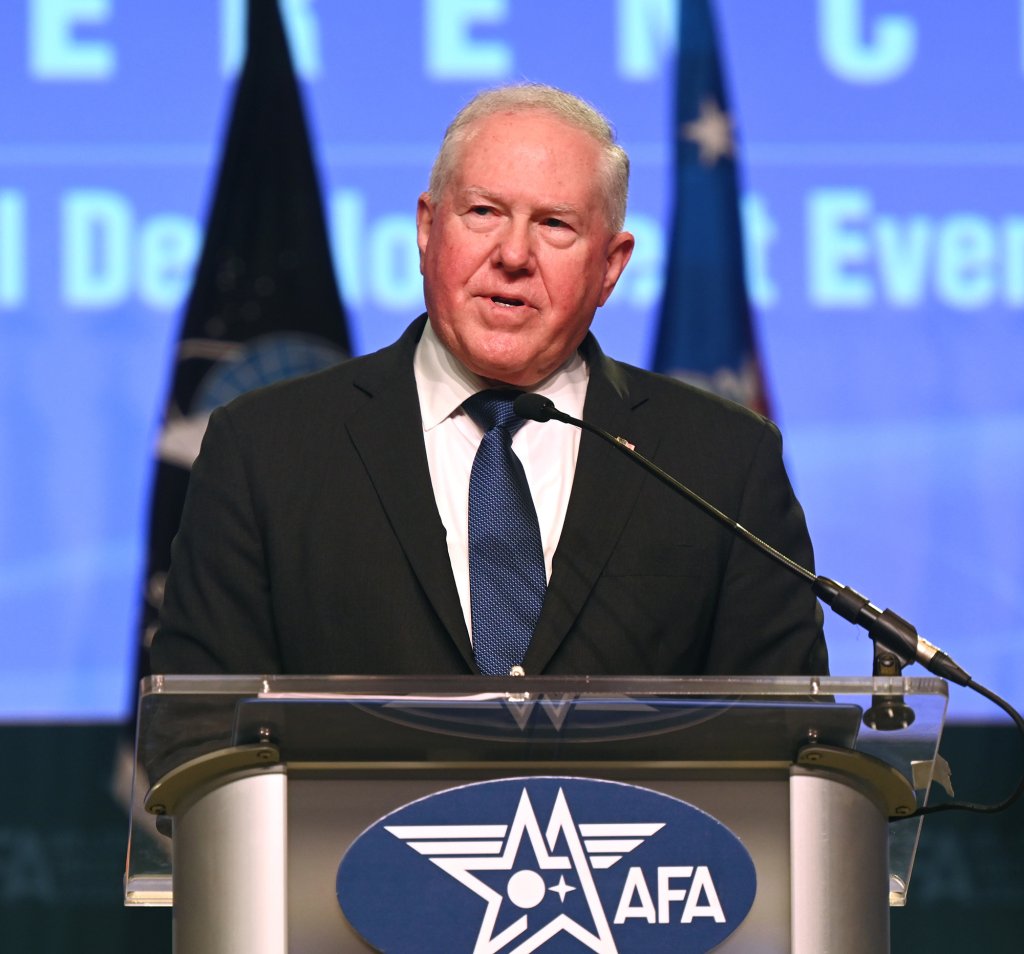
Ultimately, there’s also the possibility that advances in both artificial intelligence (AI) and uncrewed technology are moving so fast now that manned-unmanned teaming as currently envisaged could end up being considered less competitive than the drones operating on their own, working cooperatively and deployed en masse. At some point, having a human involved will only slow down the decision cycle, while potential enemies will likely have no moral qualms about having humans out of the loop, even for deadly kinetic operations.
While NGAD is, in the words of Secretary Kendall, “alive and well,” the Air Force is clearly actively looking at the NGAD platform design concept to see if it’s the right one or not.
At the same time, the service is very much engaged in a cost battle right now, with well-publicized “affordability problems” threatening NGAD and other big-ticket programs. This further raises the question of whether a program as ambitious as a new light crewed fighter is even viable, regardless of the final unit cost and how that compares with the NGAD crewed fighter.
For some time now, however, there have been signs that the service is looking at the possibilities for less-expensive combat aircraft, as well as the potential tradeoffs that might be involved. In that sense, Allvin’s notional light fighter concept is the latest in a line of efforts to rethink how the Air Force’s combat fleet should be best configured to meet the challenges to come.
Contact the author: thomas@thewarzone.com
